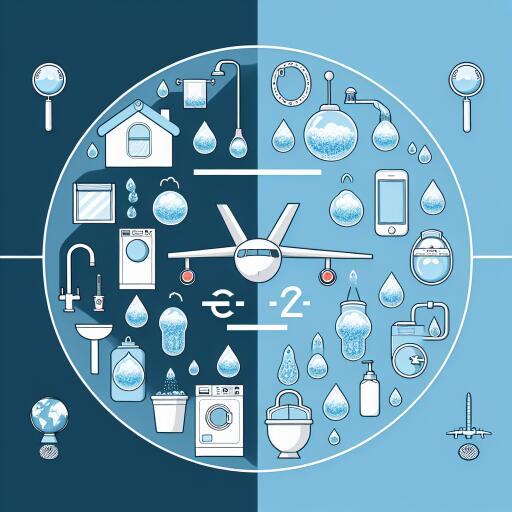
Emissions from Households’ Water Use are on a Par with Aviation
The looming threat of climate change has mobilized a consensus across global communities, industries, and governments on the need for immediate and impactful actions. Nevertheless, a significant gap exists in transforming this agreement into tangible initiatives. A prime exemplar of this challenge lies within the domain of scope 3 emissions.
Scope 3 emissions, unlike their direct counterparts, are not under the direct control of organizations but rather stem from their embedded influence in the supply chain. In the context of Australia’s urban water sector, the potential benefits of addressing these emissions are substantial.
In regions like Victoria, water utilities emerge as significant contributors to scope 1 and 2 emissions within the governmental sphere, fueling nearly a quarter of these emissions through their direct operations and energy procurement. However, the real game-changer resides in tackling the scope 3 emissions associated with water supplied to consumers. Our findings suggest that the impact of targeting these emissions could outstrip the planned reductions in scope 1 and 2 by a tenfold margin.
Through an analysis centered on Melbourne, we discern that domestic water heating alone constitutes 3.8% of an individual’s carbon footprint—mirroring the emission contributions from the aviation industry. Furthermore, a city-wide initiative to retrofit showerheads with next-generation technology stands as a potent measure to pare down water and energy consumption significantly, echoing the effect of removing tens of thousands of vehicles from the roads.
This approach not only promises superior cost-effectiveness compared to other renewable energy endeavours by water utilities but also guarantees monetary savings for consumers. By promoting the adoption of energy-efficient water practices, utilities can play a pivotal role in influencing consumer behavior, thus indirectly mitigating scope 3 emissions.
Despite the water sector’s efforts to address direct emissions, a glaring gap in the accountability and measurement of scope 3 emissions persists. Our study illuminates the potential of a Melbourne-wide showerhead retrofit program to conserve between 12-27 billion liters of water annually, translating to significant energy savings and a reduction of up to 226,000 tonnes in emissions.
The challenge extends to manufacturing and policy-making spheres, where a lukewarm response to promoting efficient water use prevails due to a mix of demand dynamics, budgetary constraints, and policy hurdles. This scenario breeds a lack of initiative in leveraging water conservation as a strategy to reduce emissions—despite its evident advantages.
This inertia is akin to a ‘tragedy of the commons’ scenario, where individual actions compromise a shared resource—in this case, the planet’s capacity to absorb emissions. Traditional perspectives fail to account for the broader societal costs of inaction, such as the future repercussions of climate change. Conversely, recalibrating investment priorities to embrace community-wide, cost-effective solutions could herald a new direction.
As the water industry and other sectors grapple with the challenge of becoming carbon-neutral in their direct operations, the vast untapped potential of targeting scope 3 emissions beckons. The crux of advancing in this direction hinges on a collective effort from the community, industry, and policymakers to engage in robust, informed decision-making and legislative agility.
The pathway forward entails recognizing the issue at hand, valuing the advantages of addressing scope 3 emissions, and fostering a communal understanding of sustainable practices. The water sector, along with broader industries, stands on the cusp of harnessing significant savings and contributing to a more sustainable future by focusing on comprehensive emission reduction strategies.
In conclusion, the quest to mitigate climate change demands a more nuanced approach that extends beyond direct emissions control. By embracing scope 3 emission reduction opportunities, such as those presented in water use, we can unlock substantial environmental and economic benefits, driving towards a greener, more sustainable future.





Leave a Reply